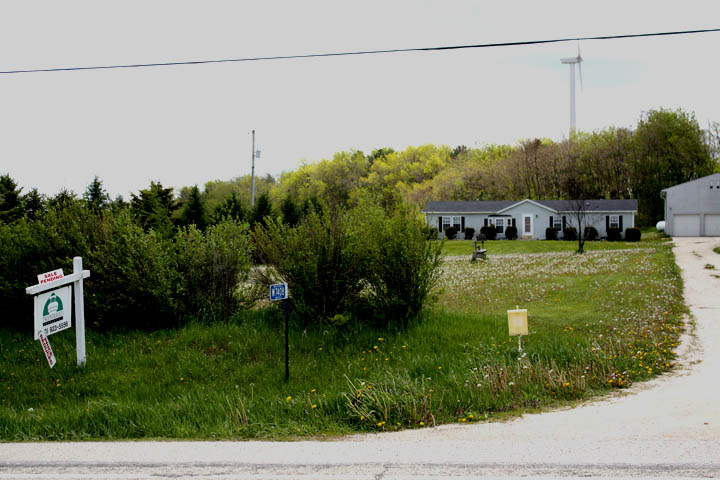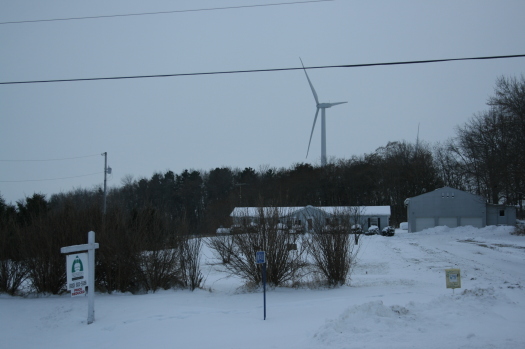Entries in wisconsin wind energy (18)
3/24/11 Invenergy Doth Protest Too Much: says it's abandoning Ledge wind project due to regulatory uncertainy in Wisconsin but adds it is still planning to develop other wind projects in our state
REGULATORY FLUX BLAMED FOR CANCELED WIND FARM
March 24, 2011
By Thomas Content
Supporters of renewable energy say a We Energies wind farm now under construction might be the last big wind project built in the state in the near future after a Chicago developer canceled a big project near Green Bay.
We Energies is building the $367 million Glacier Hills Wind Park in Columbia County, northeast of Madison.
On Monday, Invenergy LLC canceled its plan to build a wind farm that would have had 100 turbines, 10 more than We Energies is building at Glacier Hills.
The Ledge Wind Energy Center project south of Green Bay would have generated 150 megawatts of electricity, but was the most controversial wind project proposed in the state, as local residents concerned about noise and shadow flicker from wind turbines mobilized in opposition to the project.
Residents in rural Brown County have been the most outspoken group in the state in support of Gov. Scott Walker's property rights bill restricting wind farm development, and in opposition to rules developed last year by state energy regulators for where wind farms can be located.
Alissa Krinsky, an Invenergy spokeswoman, said the local opposition to the project wasn't a factor in the company's decision.
Instead, the company cited uncertainty in Wisconsin over the rules wind power companies must comply with to obtain project permits.
A legislative committee voted along party lines earlier this month to block a new statewide rule governing locations of wind farms from going into effect. The rule was developed by the state PSC in response to a directive from the state Legislature.
In a letter to the PSC, Invenergy said it could not justify further investments in the project "while substantial uncertainty persists regarding relevant project regulations."
The company said it would work with industry and state leaders to forge a regulatory environment that's more conducive to wind development and investment. "At the same time, we'll increase our development efforts outside Wisconsin, in states that offer more regulatory certainty," Invenergy said.
The company has also built natural gas-fired power plants in Wisconsin and the Forward Wind Energy Center near the Horicon Marsh three years ago. It has built wind projects in Canada and across the country, including Illinois, Texas and West Virginia.
In Wisconsin, several smaller wind power developments are still expected to go forward this year, including a seven-turbine project also in southern Brown County.
That project received a building permit last week from the Glenmore Town Board, despite protests from wind power opponents.
Other projects expected to be built include small developments in Monroe and Calumet counties, said Michael Vickerman, executive director of the advocacy group Renew Wisconsin.
But large wind projects are expected to remain stalled as the Legislature and Walker administration shift away from the Doyle administration's support for wind power development.
Vickerman projected that the Ledge Wind project would have provided $600,000 a year in payments to local communities and Brown County. The changing environment surrounding wind energy in Wisconsin is likely to affect companies beyond wind power developers.
At a recent energy conference in Milwaukee, Tom Boldt, chief executive of Boldt Construction, said his firm planned to remain active in wind power development in other states, as prospects for such projects appear to be diminishing in Wisconsin.
Boldt has built several large wind farms and is one of the state contractors hired by We Energies to work on the Glacier Hills development.
Uncertainty about the state's wind power situation comes as the Legislature and Walker administration may consider bills to relax the state's renewable electricity mandate.
Under state law passed with bipartisan support more than five years ago, 10% of Wisconsin's electricity must come from renewable sources - including wind, solar and landfill gas-to-electricity projects - by 2015.
2/16/11 UPDATE 1:06 Big Wind's big upset in little Town of Forest AND Look what they've done to my ag field, Ma AND Turbines in the news: Watch "Europe's Ill Wind" Same turbines troubles told with different accents AND Turbines banned in Lake County IL AND AWEA says the Golden Eagle isn't the the kind of gold we're after
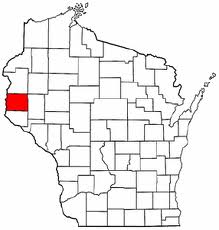 TOWN CHAIR AND TWO SUPERVISORS VOTED OUT IN RECALL ELECTION
TOWN CHAIR AND TWO SUPERVISORS VOTED OUT IN RECALL ELECTION
St. Croix County (WQOW) - The results from the recall elections in the Town of Forest are officially in.
The town chair and two supervisors have been voted out.
In the town chair race, Jaime Junker (194) was voted in to replace Incumbent Roger Swanepoel (123).
In the town supervisor race, Rick Steinberger (207) and Patrick Scepurek (185) were voted in to replace both Incumbents Carlton Cress (123) and Douglas Karau (113).
The recall is in response to a wind turbine controversy in the town.
************************
Latest WQOW News 18 story on wind turbines:
A citizen group files a lawsuit against the Town of Forest. That's north of Glenwood City.
An energy company is looking to build more than three dozen wind turbines on various properties in the area. The board approved the measure last year, but residents say they were kept in the dark about the plans.
The group is concerned about diminished land values and noise pollution from the turbines, which could be up to 500 feet tall. The group is asking for a permanent injunction to stop the building of the turbines.
[DOWNLOAD TOWN OF FOREST LAWSUIT DOCUMENT]
SECOND FEATURE:
THIS JUST IN: SCROLL DOWN TO READ NEW LEGISLATIVE ALERT FROM JOHN DROZ JR.
Click on the image above to watch ag land being torn up for a wind turbine
EUROPE'S ILL WIND: FILM REVEALS SAME TURBINE TROUBLE AS IN THE U.S.
Europe’s Ill Wind is a film about the views of people living near existing or planned wind farm developments. Their objections have been dismissed by the wind industry, government and pro-wind campaigners as selfish NIMBYism, leaving unanswered many questions about the reliability and environmental credentials of wind energy.
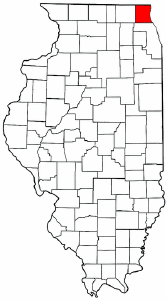
COUNTY BOARD RESTRICTS WIND FARM PROJECTS
There will be no large wind farms or towering energy turbines on the horizon for unincorporated Lake County, after the County Board voted Tuesday to bar such facilities from its development ordinance.
The 17-5 vote came after almost two years of county study on the issue and left some northern Lake County residents who had fought against allowing commercial wind farms overjoyed.
“It’s great,” Carol Sebesta of Old Mill Creek said after the board’s vote. “So many things have not been settled as far as their effects on children and the elderly.” READ ENTIRE STORY: Chicago Sun Times

WIND INDUSTRY GROUP OPPOSES FEDERAL GUIDELINES TO PROTECT BIRDS
The American Wind Energy Association Industry said it will oppose plans by a federal agency to adopt voluntary regulations on wind developers to protect birds and other wildlife.
AWEA said in a release that more than 34,000 MW of potential wind power development, $68 billion in investment and 27,000 jobs are at risk due to U.S. Fish and Wildlife Service policies on golden eagles.
Read entire article: www.pennenergy.com
EXCERPTS: NEW LEGISLATIVE ALERT FROM JOHN DROZ JR
As you know, probably never before has the US Congress been so focused on making budget cuts. There will be an important vote today in the House, but this process will go on for awhile, as there is no real resolution in sight.
[THANK YOU to all those who contacted their congressional representative yesterday.]
In my view, we MUST take advantage of this window of opportunity and do EVERYTHING possible to get wasteful renewable energy spending added to these cuts.
As has been discussed before, a superior energy target is "1603 Grants" — which amount to some $5 Billion. If these federal subsidies are removed, the whole wind industry in the US could collapse in one fell swoop!
There is NOTHING we can do that is simpler, faster, or less expensive, that will get this beneficial result.
If you want some information about 1603 Grants, see <<http://www.masterresource.org/2011/01/section-1603-windfall/ <http://www.masterresource.org/2011/01/section-1603-windfall/> >>.
------------
A good site that was sent to me seems to be the best place to go: <<http://majorityleader.gov/YouCut/ <http://majorityleader.gov/YouCut/> >>. This gives a complete list of the "Continuing Resolution" programs that Republicans are currently targeting to cut. So far the 1603 Grants are not on the list!
Note that their savings total is only $100 Billion (for 150 programs), so adding this one item for $5 Billion will get their attention.
At the bottom of that page, please click on the part that says Submit Your Idea.
The main argument that AWEA and the lobbyists are using to "justify" 1603 grants, is that it will produce jobs. Like almost everything they say, this is a ruse — and should be exposed as such. Here is what you might write (using your own words) at <<http://majorityleader.gov/YouCut/YourIdea.htm <http://majorityleader.gov/YouCut/YourIdea.htm> >:
"Please eliminate the 1603 Grant program as it is very wasteful spending. Independent studies have shown that this will result in a net jobs loss, that many of the jobs created will be outside the US, that the cost of jobs created is very high, that the benefits of these 'make work' jobs are very low, etc. And why are we borrowing money from China to subsidize an industry that makes 25%± per year in profits???"
If you want some additional information on these types of jobs, here are some reports that have recently come out:
1 - "Defining, Measuring & Predicting Green Jobs" <<http://tinyurl.com/626oa62 <http://tinyurl.com/626oa62> >>, and
[Note that this study was sponsored by a major environmental group!]
2 - "The Myth of Green Energy jobs — The European Experience" <<http://www.aei.org/outlook/101026 <http://www.aei.org/outlook/101026> >>.
PLEASE pass this on to all open-minded US citizens you know who are concerned about us sensibly reducing our debt.
THANK YOU!
john droz, jr.
physicist & environmental advocate
8/19/10 PSC commissioners discuss wind siting rules.
At an open meeting held Thursday at the Public Service Commission of Wisconsin, commissioners discussed the the text of the proposed wind siting rule.
DOWNLOAD THE PROPOSED RULE BY CLICKING HERE
Commissioner Lauren Azar suggested a setback of 2200 feet from homes unless a developer can prove a turbine could be sited closer to a residence and still meet noise and shadow flicker standards.
She said the setback distance was based on information from PSC staff which indicated a 45dbA noise standard would be met at that distance.
However, Commissioner Azar also noted that the World Health Organization recommends 40 dbA as a nighttime noise standard, and indicated was the noise limit she preferred.
Residents under contract with developers could waive all standards and have turbines placed as close as 1.1 times the turbine height to their homes.
Chairman Callisto and Commissioner Meyer didn't offer their immediate opinions on Azar's suggestions.
Continued discussion of wind siting rules is scheduled for Monday.
6/11/2010 Do wind turbines affect property values? Home in Invenergy wind project finally sells after 740 days on the market and a 45% price cut AND Should wind developers be licensed before they get you to sign contracts that will tie up your land for the next 40 years?
In March of 2008 the 86 turbine Invenergy Forward Energy wind project went on line in Dodge and Fond du Lac Counties, Wisconsin. The setback from non-participating homes is 1000 feet.
Two months later this home in the project goes up for sale.
LISTED MAY 29, 2008: For Sale: Country home on five wooded acres. 1900 square feet, four bedrooms, 3.5 baths, central air, new roof, sky lights in kitchen, deck, family room with wood burning fireplace, vaulted ceilings, first floor laundry, excercise room, whirlpool tub in master bath, 3.5 car garage, your own nature trail through black walnut woods behind the house
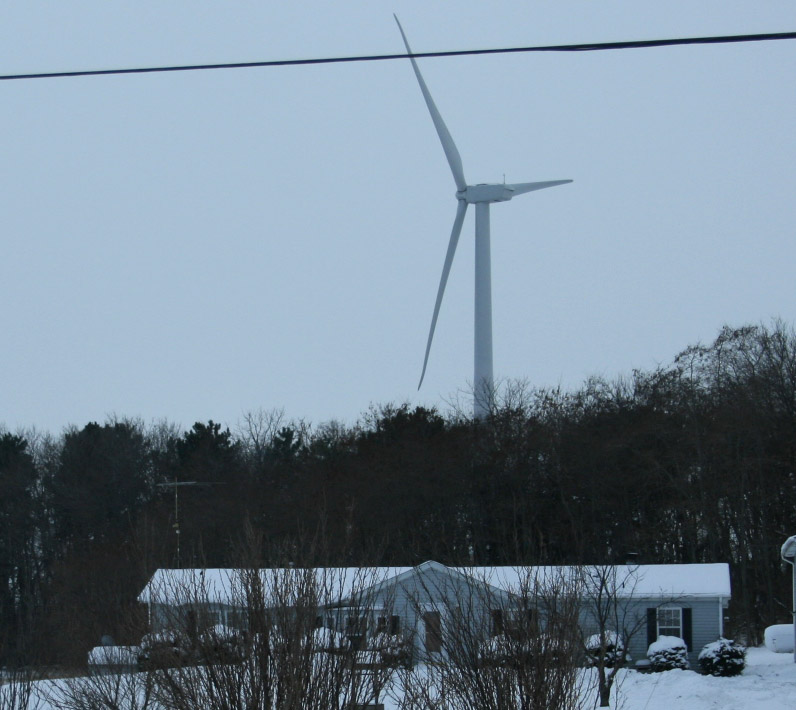
MAY 29, 2008: Asking $219,000 No buyers.
WINTER of 2009: Asking Price: $179,900. No buyers.
SPRING of 2010: Asking Price: $158,900. No buyers.
JUNE 4, 2010: After 740 days on the market, SOLD for $129,000
Second Feature
Though the wind industry claims the proximity of wind turbines to a home has no effect on property values, real estate broker and Wind Siting Council member Tom Meyer disagrees. He believes the presence of wind turbines does have a negative impact on property values.
He also believes that wind developers should be licensed before they get you to sign a contract that will tie up your land for the next 40 years.
Here's why:
[The following document can be found on the Wind Siting Council Docket, # 1-AC-231]
Prepared by Tom Meyer For Wind Siting Council Meeting June 9, 2010
Wisconsin Statutes Chapter 452 Real Estate Practice
The State of WI has a history of protecting the consumer of real estate services and holding real estate brokers accountable.
The ability to provide a limited practice of law is afforded to brokers by a 4-3 vote of the 1960 WI Supreme Court (The Dinger Case). This right is closely regulated and serves the public well for 60 years.
The legislature and the real estate industry in WI has worked cooperatively to modify Wisconsin’s agency law over those years to enhance the business models available to the WI consumer and raise the level of service and skill provided to the consumer by the licensee.
The activities of persons employed by, or acting on behalf of Turbine Developers, are substantially real estate brokerage services. The services are provided to the Lessor (the landowner) on behalf of the Lessee, (the wind energy developer).
Sign them up
A term commonly used in describing the door to door approach to obtaining leases where land owners “host” a turbine(s) is “Sign them up”.
While sign them up is not a legally defined term, what is being signed is a legally binding contract: a lease. What happens prior to the land owner signing the lease is “negotiation”, another legally defined term. See subsection 452.01
Atypical Lessee – Lessor Relationship
The lease instrument in Wind Energy Development is drafted by the LESSEE—the developer, not the landowner.
The more familiar practice in everyday real estate experience where a landowner leases property to another party is the reverse of what happens in wind energy development.
In siting wind turbines, the developer goes to the landowner.
The developer comes to the property with a vast amount of knowledge and preparation.
There is virtually no advanced notice and no opportunity to brainstorm with other landowners.(In fact we are told by Wind Siting Council members with wind energy interests that it is not favorable to their profit margins to have owners come together to discuss terms prior to signing contracts.)
The developer arrives with a contract and a sales presentation. The wind energy persons have stated that it is common for a family owned farm operation to be struggling financially in Wisconsin, and the promise of $4000 annual payments is attractive.
Protection for the Wisconsin Citizens who consider wind energy development leases
Providing a seven (7) day window of opportunity for the landowner to have the lease reviewed by legal counsel is a good start to protecting Wisconsin residents.
Considering the practice of soliciting lease agreements is a limited practice of law and not incidental to the work of the wind energy developers, it seems prudent for the wind energy developers to be Wisconsin licensed real estate brokers.
Advantage to the Public of Wind Turbine Developers being licensed real estate brokers:
An avenue of recourse through the Real Estate Board
Better disclosure of representation
Minimum level of competence for persons negotiating real estate transactions
Statutory defined duties of a broker:Fair and honest treatment. Reasonable Care and skill. Disclosure of material adverse facts. Confidentiality. Provide accurate market conditions. Accounting. Objective presentation of the lease.
Supervision standards for employees limiting who may discuss lease terms with the consumer
Administrative Rules
RL 15: Maintain copies of documents---Assures the public records of agreements and business practices are available for investigation
RL 16 Use of approved forms and legal advice—RL 16.05 prohibits the licensee from giving legal advice concerning rights and obligations. Will help with landowners being coerced into thinking their agreements are confidential.
RL 17 Protects the consumer from receiving real estate service from a non-licensed person.
RL 24 Conduct and ethical practices---Agreements are in writing, accurate representation of interests,
RL 25 Continuing Education—Keep the wind energy developer current with real estate laws
Provided by Tom Meyer, Wisconsin Real Estate Broker
HAVE YOU REACHED OUT AND TOUCHED YOUR PSC TODAY?
The PSC is asking for public comment on the recently approved draft siting rules. The deadline for comment is July 7th, 2010.
The setback recommended in this draft is 1250 feet from non-participating homes, 500 feet from property lines.
CLICK HERE and type in docket number 1-AC-231 to read what's been posted so far.
CLICK HERE to leave a comment on the Wind Siting Council Docket
6/8/10 Wednesday's wind siting council meeting and what's on the docket? What's the difference between what the wind developer tells you and what the easement you signed says? It's not a good surprise. AND a Rock County prairie conservationist weighs in on the draft siting rules.
WIND SITING COUNCIL MEETING TOMORROW
Wednesday, June 9, 2010, at starting at 9AM
Public Service Commission Building
610 North Whitney Way
Madison, Wisconsin
Audio or video of the meeting will be broadcast from the PSC Website beginning at 9:00. CLICK HERE to visit the PSC website, click on the button on the left that says "Live Broadcast". Sometimes the meetings don't begin right on time. The broadcasts begin when the meetings do so keep checking back if you don't hear anything at the appointed start time.
WHAT'S ON THE AGENDA?
1) Welcome/Review of today’s agenda
2) Review and adoption of meeting minutes of June 2, 2010
3) Presentations: Property Values
a. Kurt Kielisch, Appraisal Group One
b. Eric Corroy, Zoning Administrator, Red River Township
c. Joe Jerabek, Zoning Administrator & Assessor, Lincoln Township (invited)
d. Representative, Action Appraisers (invited)
4) Background information on questions raised by Council regarding the draft rules
a. Statutory interpretation
b. Enforcement
c. Commission rulemaking authority
d. Notice requirements
e. Emergency services
f. Vestas manual reference
g. Decommissioning
h. Stray voltage
i. Complaint resolution
j. Commission noise measurement protocol
5) Discuss Council’s recommendations on topics covered by the draft rules
6) Next steps/Discussion of next meeting’s time, place and agenda
7) Adjourn
This meeting is open to the public.
If you have any questions or need special accommodations, please contact Deborah
Erwin at the Public Service Commission of Wisconsin by telephone at (608) 266-3905 or
via e-mail at deborah.erwin@wisconsin.gov.
HAVE YOU REACHED OUT AND TOUCHED YOUR PSC TODAY?
The PSC is asking for public comment on the recently approved draft siting rules. The deadline for comment is July 7th, 2010.
The setback recommended in this draft is 1250 feet from non-participating homes, 500 feet from property lines.
CLICK HERE and type in docket number 1-AC-231 to read what's been posted so far.
CLICK HERE to leave a comment on the Wind Siting Council Docket
WHAT'S ON THE DOCKET?
This from a resident of Brown County
I do completely agree with the realtors on the counsel that the developers need to be licensed and there needs to be a "truth in wind development" requirement.
We agreed to run a buried cable, not a turbine. It was never disclosed that by signing a cable easement we were also allowing a turbine to be placed right up to our property line, and that a turbine could be placed 500 feet from our home.
We would have never agreed to this if it was truthfully disclosed.
-- Curt Hilgenberg, Greenleaf Wisconsin
Dear PSC Commissioners and Wind Siting Counsel members;
I`d like to share my experience with a wind developer in hopes of helping future land owners.
My wife and I looked into small wind turbines for several years, but could never cost justify buying one. The payback period was always longer that the life expectancy of the turbines. When I read about a proposed wind project in my area, I called the developer to find out about hosting a turbine on our land. I though, this is great, I can do my part for renewable energy.
When we learned about the size of the turbines, we realized that there was no where on our 35 acres where I could host a turbine and not impact my neighbors, so we decided against it. We also were worried about how a 400 foot turbine would negatively affect property values and the ability to sell our home if needed.
After over a year of hearing almost nothing about the project we got a call about running a buried collector cable through our land. We again decided against it. After several more phone calls, we reluctantly agreed to sign a buried cable easement.
We were given the pitch that they are going to be built with or without our participation so we may as well benefit financially from it. We were promised that the cable would be run along the lot line where it would have minimal impact.
Again we did this to help the project and to do our part for renewable energy.
After another year hearing nothing from the developer (we did attend the only public information session hosted by the developer but were told everything is still being designed yet, they have don`t have any details) we learned what the plan was for our property.
We found out about it on the PSC application, the developer never discussed anything with us. The plan was to run a high voltage cable through our front yard between our house and barn which are about 100 feet apart. This high voltage line was going to run right through our electric supply line, our well water line and our septic system.
It was going to cross 3 fence lines, take a right turn in the middle of our horse pasture and then cross another fence line. Hardly the low impact we were promised.
The really baffling part of this is that there was an alternate path between the 2 turbines they are trying to connect that was almost a straight line on vacant land. This path was not through our property, but was through other properties already under easement. Instead the developer chose a path that was about twice as long and had much more negative impact.
Once you sign an easement agreement, the developer holds all the cards.
They can legally place turbines, collector lines, and access roads anywhere on the property under easement.
I would like to see the process changed to require landowner approval after the land usage is determined. The contract agreement should be a separate event from the easement filing with the county.
If the developer`s plan is materially different from what was discussed and promised, the easement could not be filed and the contract would be voided. This would ensure that the developer would keep their promises and keep the land owner involved in any changes, or the land owner could opt out.
In our case, the developer did not do what was promised. They have since verbally said they would move the line, but we have seen no evidence of it.
We have become so disgusted at the misstatements, omissions, and lack of communication that we no longer want to be part of the project. We returned our un-cashed easement check (we were waiting to cash it until we saw that the plan for our land was acceptable and as discussed) to the developer and asked to be released from the contract and easement.
They simply said no.
We hired an attorney to work out a release. They again said no and reminded us of that our contract had a confidentiality clause.
I`m not implying that all wind developers will look you in the eye and lie to you. I`m sure that some work with the landowners for the benefit of both parties. These reputable developers should not have an issue with a 2 step easement because they are treating the land owner as a partner.
I do completely agree with the realtors on the counsel that the developers need to be licensed and there needs to be a "truth in wind development" requirement. We agreed to run a buried cable, not a turbine.
It was never disclosed that by signing a cable easement we were also allowing a turbine to be placed right up to our property line, and that a turbine could be placed 500 feet from our home. We would have never agreed to this if it was truthfully disclosed. This is plain and simply WRONG!
A developer has an unfair advantage. They work with these contracts on a regular basis. The land owner, probably only once in a lifetime.
The process is broken. It needs to be fixed and regulated.
Curt Hilgenberg
Greenleaf, Wisconsin.
This from Kevin Kawula, a prairie conservationist from Rock County, Wisconsin
To the Public Service Commission of Wisconsin, Commission Staff, and Wind Siting Council Members,
I ask that no CPCN be granted by the PSCW for any Industrial Wind Facility, or Industrial Wind Project, until health and safety standards for people and wildlife can be established by the Wind Siting Council, and a more responsible, ethical, and equitable joint development model can be created for a state natural resource, the wind.
The Commission`s draft safety setback of 1,250 feet, from a non-participating residence, and a nighttime noise level of 45 Dba, are insufficient to protect Wisconsin citizens` health. These setbacks put rural Wisconsin citizens at risk from unsafe industrial wind development.
Wind developers are in Wisconsin to do business, and make money. They are offering the minimum in cooperation, compassion, and compensation, and are expecting the greatest of windfalls. The electric utilities by law are guaranteed a profit.The question is how much are the utilities allowed to profit over a community's health and safety from a "free" resource. A "greater benefit" to society, the state, is often the justification. The wind developers hope it is so. It is the PSCW`s responsibility to prove the case for such a takings from the commons.
I, as a tax-paying citizen, am asking the PSCW, as an appointed government body, to tell wind developers and the utilities, that Wisconsin and its citizens deserve better. Better safety setbacks, better operating parameters, and better cost and profit sharing for the exploitation of a state natural resource.
It is alarming that the PSCW would consider and approve a CPCN for WEPCO`s Glacier Hills with the same inadequate safety setbacks, before it has established the rules for siting wind facilities in Wisconsin through the Wind Siting Council, as required by the recently passed Wind Siting Reform Law.There are known and admitted problems with industrial scale wind turbines. Nighttime noise and sleep deprivation are the prime concerns for Wisconsin`s rural residents.
The need for nighttime industrial wind generation profits, over a citizens right to healthful sleep, needs to be addressed by the PSCW prior to granting of any CPCN any industrial wind facility.
Bat deaths and wildlife displacement also need to be addressed responsibly.
Wind developers and utilities are trying to side-step the very real health concerns (Dr. McFadden`s `partial overview` presentation to the Wind Siting Council fits in here!), community, and environmental impacts of industrial wind facilities by dazzling the Wind Siting Council, Commission, and citizenry with RPS claims, shared revenue numbers, and promised jobs.
RPS CLAIMS
Wind developers and utilities can assure the PSCW of an industrial wind facility`s RPS qualifications when it resolves to close down an appropriate coal burning facility.The PSCW can determine the value of an industrial wind facility either through the CPCN permit (x amount MW coal facility), the installed nameplate capacity of an industrial wind facility (1-200 MW, as proposed, of coal generation), or actual industrial wind facility generation.
(The Governor`s Task Force on Global Warming is hoping that Wisconsin wind facilities will achieve 29% of their nameplate capacity, but numbers in Wisconsin wind facilities are currently lower at 25% of nameplate capacity) This would help the PSCW achieve true RPS goals of reduced fossil fuel CO2 emissions.
If the inclusion of industrial wind nameplate capacity is allowed by the PSCW factoring towards achieving Wisconsin`s utilities RPS goals without tying that industrial wind nameplate to the equivalent reduction of coal generation, then the RPS is hollow and without value.
All understand the intermittency of industrial wind generation. All understand the responsibilities of base load generation towards the dependability of a transmission/distribution electrical grid.
If industrial wind facilities do not reduce the need for nighttime base load generation, due to their intermittency or lack of need for additional generation, then are industrial wind facilities reducing CO2 emissions?
The answer is no.
If the economic benefits of nighttime generation are necessary to the wind industry, despite the lack of emission reductions, then why is the Wisconsin Public Service Corporation (WPS) so intent on building additional transmission lines up to Manitoba Hydro reservoirs north of Winnipeg Canada?
According to Roy Thilly (WPPI), the Co-Chairperson of The Governor`s Task Force on Global Warming, transmission lines built up to Manitoba Hydro reservoirs would allow WPS to store the nighttime wind generation it currently has to sell at a loss to get it on the grid at night.Manitoba Hydro would charge for this service, but it would prevent WPS from having to sell nighttime wind generation at a loss.
SHARED REVENUES?
Lets look at some of the revenue numbers surrounding the WEPCO, Glacier Hills Wind Facility.WEPCO plans to construct 90 1.8MW wind turbines for an installed capacity of 162MW of renewable energy, Columbia County would receive $378,000 per year, the Town of Scott $108,000, and the Town of Randolph $180,000, for a total of $666,000 per year, or $4,111 per MW of installed nameplate capacity.
Not bad? What is the source of these shared revenues? WEPCO income, profits, or a rate tax mechanism?
How much profit does WEPCO hope to make? A bunch.In July 2009, the U.S. Treasury Department began to accept applications for renewable energy projects cash grants of up to 30% in lieu of Investment Tax Credits (ITCs).
Regardless of the price tag WEPCO is certain to write off the cost of the project against its earnings over the next 5 to 6 years. So the cost, $335 million to $413 million, is shouldered by the taxpayers.
Up to 30% up front, the remainder through annual depreciation written off against WEPCO Glacier Hill earnings, and any depreciation balance transferable to other WEPCO earnings.
WEPCO potential earnings at Glacier Hills can be calculated as follows: Each 1.8MW wind turbine, generating at 29% efficiency, and selling the generation at 7 cents a kilowatt hour (kwh), would earn WEPCO $365,400 per turbine per year.Green tags/Green credits, sold at 2 cents a kwh, would generate an additional $104,400 per turbine per year. There is also the Federal Production Tax Credit (PTC), at 2 cents per kwh that would also be worth $104,400 per turbine per year in additional write offs.
The 90 turbines of Glacier Hills together could earn $42,282,000 per year, with a PTC worth $9,396,000.
So to recap WEPCO through Glacier Hills could see $42,282,000 in gross income per year, while Columbia County, and the Towns of Randolph and Scott could see $666,000 per year. Fair? Just? Equitable?
How much will the State of Wisconsin generate in tax revenues from Glacier Hills?
Another case study of industrial wind facility shared revenues can be found with MG&E and Wave Wind LLC. Wave Wind LLC was recently in the papers seeking 8 cents per kwh for it`s proposed industrial wind project`s generation, but MG&E was only offering 2.9 cents per kwh, due to having met it`s RPS requirements.If Wave Wind LLC were to get 8 cents per kwh along with green credits at 2 cents per kwh, that means a 1.5 MW wind turbine operating at 29% efficiency would generate $435,000, $375,000 at 25% efficiency, while the county would receive $4,000 and township $2,000.
JOBS
We as a state or nation can subsidize any industry we choose. For an industry to try to hold a community, state, or country hostage over the promise of `JOBS` is ridiculous in this day and age. We see it all the time however, as community`s vie for the worse business deal to lure a temporary industry. Choose any green industry and the `Jobs` argument fades quickly.
CONCLUSION:
STATE NATURAL RESOURCE ALLOCATION REQUIREMENT FOR CPCN
Since we, Wisconsin citizens, are paying for these industrial wind projects, and that profits made from our shared natural resources must be distributed equitably, wind project developers need to be more open and generous with its profit sharing potential of our shared natural resources.The PSCW needs to provide improved oversight so that the industrial wind industry`s business drive does not jeopardize any Wisconsin citizens` quality of life.
Wind proponents like to stress that the wind is "free". Utilities, like WEPCO, MG&E, etc. stand to profit exorbitantly from a "free" Wisconsin natural resource ($42,282,000 with Glacier Hills at 29% efficiency, $36,450,000 at 25% efficiency vs. $666,000 for Columbia County and the towns of Randolph and Scott regardless of generation efficiency) if our appointed government bodies, like the PSCW, do not allocate the natural resource, and its benefits, more equitably.
The primary PSCW CPCN reallocation requirement, for any industrial scale wind project, is the nighttime curtailment of industrial scale wind turbine operations, when the demand for electrical generation is low and covered by base load operations, and human health and safety impacts are high.Nighttime curtailment will also eliminate unnecessary bat, and nocturnal migrating bird mortalities.
Industrial scale wind developers, in the Glacier Hills case WEPCO, often make payments in lieu of taxes, to communities and governments. Nighttime curtailment, as a CPCN required reallocation of a state natural resource, is an improvement on this model, and would benefit the hosting communities by removing an unnecessary health impact at no expense to WEPCO.If the wind is truly free then the PSCW should not hold Wisconsin communities, homes, and citizens accountable for profit forecasts made to WEPCO shareholders for a natural resource they do not own.
This is much more equitable than a response to non-hosting residents found in a partial review of the PSCW`s EIS on Glacier Hills states in, Property Values, 5.10.2, p.85, "Another method that could mitigate potential impacts to non-host residences is a property value protection plan.This type of a plan provides property owners with certain assurance that they will receive "fair market value" for their eligible properties upon sale. Since 1997, this type of agreement has been implemented between the Onyx Glacier Ridge Landfill and the town of Williamstown, city of Mayville, and Dodge County. Fair market value is determined by a state-licensed appraiser. The plan identifies the properties covered by the agreement, the party responsible for paying for the property appraisals, and the method for compensating affected property owners."
The fact that the PSCW uses landfill mitigation as a way of addressing wind project impacts, should raise concerns with every rural land owner, and state politician.
Wind Turbine Projects = Sanitary Landfills ...as far as home and property values are concerned.
The PSCW can correct these errors. Wisconsin deserves responsible policy makers who care about all of Wisconsin`s citizens, not just those who are paid to shape public policy, and create short sighted legislation.
Respectfully submitted,
Kevin A. Kawula,
